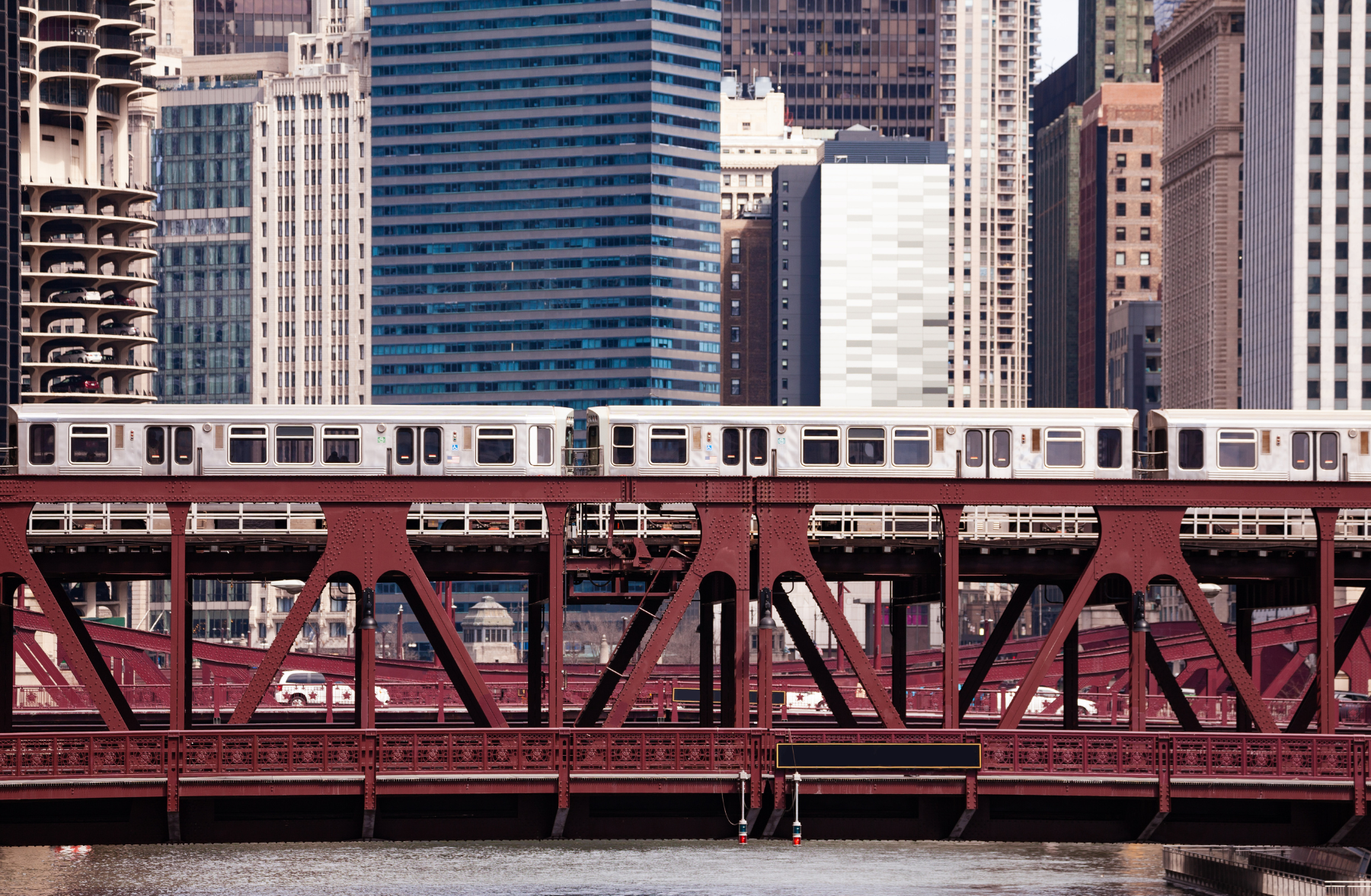
How Chicago Became the “Body of the Spider” of America’s Railroads
Published on May 30, 2024
This weekend, Pullman is celebrating Railroad Days, where you’ll be able to explore three historic railroad cars and learn all about the history of the historic neighborhood. While there, take Ronnie Frey’s app-guided walking tour of the National Historic Park or Cynthia Ogorek’s exploration of its groundbreaking infrastructure, and how it made life easier for women.
By Dave Lifton (@daveeatschicago)
The lucrative possibility of connecting the Great Lakes to the Mississippi River watershed brought the first non-Indigenous settlers to a marshy, onion field-strewn area along Lake Michigan. But shortly after the 1837 incorporation of Chicago, a much more efficient method of sending goods and people across the U.S. emerged: railroads.
In 1848, the same year the Illinois and Michigan Canal opened to fulfill that initial vision, construction began on the Galena and Chicago Union Railroad, created to bring lead from the mines in Western Illinois to the rapidly growing city. As with its proximity to two major waterways, Chicago’s location became a key factor in the growth of railroads. Not only was it centrally located, but the Midwest’s natural resources dovetailed with what was needed for the trains. The forests and mines of Michigan, Wisconsin, and Minnesota provided timber and iron, while the coal needed came from Southern Illinois.
By 1860, 11 lines came through Chicago. This included the Illinois Central, which started at the state’s southern tip at Cairo and came into Chicago via trestles built into Lake Michigan. Opened in 1856, it was Chicago’s first commuter line. Those tracks still exist, running through Grant Park and underneath Millennium Park.
The clean slate afforded by the Great Chicago Fire meant that the city could be built with railroads in mind, primarily for freight. Huge rail yards sprung up on the southern and western outskirts of town. Locally grown grain, stored in elevators near the tracks, could be easily transferred onto the cars and shipped to other major cities. So could livestock that came in from ranches as far away as Abeline, Texas.

But the cattle and hogs wouldn’t leave until they made a trip to the Union Stock Yards, where they would be slaughtered and butchered. To ensure the meat wouldn’t spoil in transit, Gustavus Swift, who owned one of the major meat-packing plants at the yards, spearheaded the design of a refrigerated car in 1878.
The proliferation of the railroads prompted Chicago’s emergence as a global manufacturing capital as the 19th century came to a close. Writer Carl Sandburg understood this convergence of agriculture, industry, and innovation was crucial to the Windy City’s greatness, and began his famous 1914 poem “Chicago” with:
“Hog Butcher for the World,
Tool Maker, Stacker of Wheat,
Player with Railroads and the Nation’s Freight Handler”
Another major development in the railroad car that emerged from Chicago was designed for humans, not cattle. In the 1860s, George Pullman developed a sleeping car that rode much more comfortably than previous attempts. Decorated in Victorian luxury like dark woods, plush curtains, and brass fixtures, and featuring dining cars that rivaled the finest restaurants, Pullman turned train travel into a “hotel on wheels.” At one point, Chicago had six downtown terminals for intercity passengers.
A 1909 Scientific American article detailed Chicago’s railroad dominance. More than 100,000 of the 225,000 miles of track in the U.S. directly fed into Chicago, with nearly 1,300 trains coming in and out of the city every day. The Chicago Board of Trade provided statistics for the previous year of the agriculture that passed through its lines:
- 10 million barrels of flour
- 239 million bushels of wheat, corn, oats, rye, barley
- 3 million cows
- 8.652 million pigs
- 12.5 million bushels of potatoes
- 300,000 tons of hay
And this doesn’t even include the volume of consumer goods, machinery and other freight being shipped. The piece added that the efficiency of the system was due to an internal network of tracks circling the town that allowed the trains to be disassembled upon arrival in Chicago, with the cars sorted and sent to other lines for the next phase of their journey.

But the most visible symbol of Chicago’s railroads is the “L”, the elevated, intracity commuter system. The history of the “L” requires at least one blog post of its own, but it started with the Chicago and South Side Rapid Transit Railroad Company (now the Green Line) in 1892, with two lines connecting the West Side with downtown opening up a year later. The tracks that circle downtown were completed in 1897, leading to the central business district being called “The Loop.” The network has since grown into eight lines comprising nearly 225 miles of track and 145 stations, with 117 million rides annually as of 2023. Originally built by private companies, it has been run by the Chicago Transit Authority since 1947.

The Adventure starts when you say it does.
All eATLAS Adventures are designed and built by experienced eATLAS Whoa!Guides. They're always on. Always entertaining. And always ready to go.
Check out our Adventures!